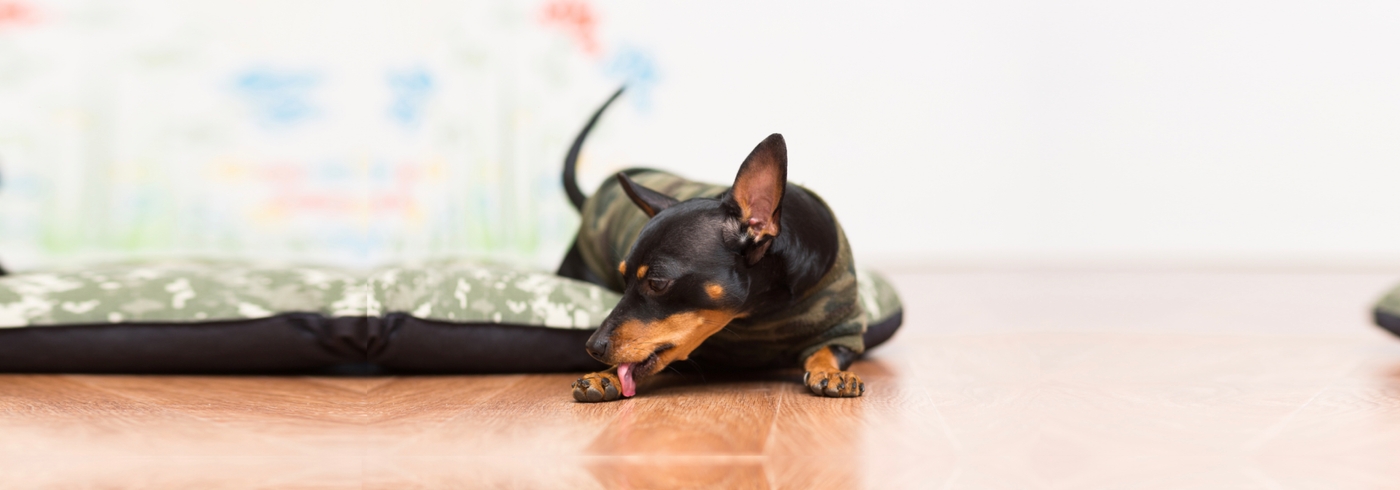
Why Do Dogs Lick Their Paws?
Is your dog licking or chewing on their paws? Let’s learn more about why dogs lick their paws and what you can do to help.
Why Do Dogs Lick Their Paws?
When dogs lick or chew their paws, there are several reasons that could cause this seemingly odd behavior. Sometimes, it’s simply a form of self-grooming, but other times it may be a sign of an injury.
The very first step is to monitor your dog’s behavior carefully. Ask yourself the following questions:
- When did they begin to exhibit this behavior?
- Does the chewing and licking happen at a specific time of day? Or is there an event that triggers it?
- How long does the behavior last?
- Is your dog easily distracted from the behavior? Is there a way to interrupt and stop it?
- Once stopped, at what point does your dog return to the behavior?
- Is the behavior taking place only around people, or does it happen behind closed doors as well?
Let’s take a look at a few different reasons why your doggo might be licking their paws, and what you can do to help.
Sometimes, It’s Just Self-Grooming
The most common reason dogs lick their paws is simply to clean themselves, i.e. to self-groom. This may not be an everyday habit, especially if your pup is more of an inside dog, versus an outdoor adventurer who’s trying to clean the mud out from between their toes.
Self-grooming is generally nothing to worry about — dogs can’t quite trot into the bathroom to wash their pads when they come inside, so this is the next best thing for them.
That said, if your dog is licking their paws frequently and they seem stressed about it, it could mean that something more serious is going on and you should make a point to inspect the paw(s) they’re spending a lot of time licking.
It Might Be Dry Skin, Especially During Winter
Your pup may be also be licking in an effort to relieve discomfort caused by dry skin.
Are you noticing dandruff flakes in your dog’s fur? Is the licking more common during the colder months? Could you be bathing your dog too often?
It’s also entirely possible that your doggo’s dry skin is diet-related. Is your dog getting enough high-quality fats and oils from their meals? If not, dry skin can be made worse by a lack of healthy fats in your pup’s daily dish — healthy fats like the omegas found in fish oils help to keep your dog’s skin (and coat) nourished.
You can help relieve your dog’s dry skin by:
- Adding high-quality oils to your dog’s foods. This includes avocado oil, olive oil, coconut oil, or high quality fish oils. You can fortify your dog’s diet with a quality Skin & Coat supplement that contains high-quality omega-3fatty acids and wild-caught salmon oil.
- Using dog-specific balms to moisturize their pads. You can find these in most quality pet shops, and they often come in a chapstick-like container or small jar. Think of this akin to how you need to lotion your hands as the air gets drier outside over winter.
- Giving them fewer baths. While we love when our dogs smell clean and fresh when they cuddle up next to us, they don’t need baths anywhere nearly as often as we do. Bathing your pup too much, especially in hot or warmer water, can dry out their skin and strip their coats of important hydrating oils. You can buy pet wipes or even refresher sprays to substitute some of those baths.
It Could Also Be Allergies
Yes, dogs have allergies just like humans do!
Some signs of dog allergies include:
- Scratching
- Licking their paws or other body parts
- Face rubbing
- Red or pink skin
- Fur loss
- Sneezing
- Watery eyes
- Gastrointestinal (GI) issues
Many forms of dog allergies are dermatologic, meaning that the reaction has to do with the skin, but some dogs react with watery eyes or an upset tummy. If your dog is experiencing these symptoms, a high-quality digestive probiotic may help.
There are a few different types of allergies your dog could be suffering from that could all result in an allergic reaction causing his paws to itch — these include food allergies, environmental allergies, and flea allergies.
In all cases, you should consult your veterinarian if you believe your dog has an allergy.
Let’s dive into each of these allergies a little deeper.
Food Allergies
Food allergies in our dogs can range from actual, severe allergies, to mild food sensitivities and intolerances. The most severe food allergies can be life-threatening and may result in immunological responses, such as anaphylactic shock. Less severe allergies can cause hives, swelling, itchiness, vomiting, or diarrhea.
Itchy paws can be a sign of a mild to moderate food allergy or sensitivity, and your dog licking them is their way of trying to scratch that itch.
Your veterinarian may recommend trying an elimination diet to figure out which ingredient(s) your dog may be sensitive to, and in more severe cases, may order allergy testing for your pup.
Environmental Allergies
Environmental allergies such as seasonal allergies and hay fever can also lead to your pup licking and chewing their paws, as well as having issues with their ears. Interestingly enough, while human allergies often improve over time, dog allergies tend to get worse as they age, which is why your senior pup who used to roll around in the dandelions may not be so keen to do it now.
Seasonal allergies can be hard to avoid. Allergens can be in your home, backyard, and really anywhere your pet goes, and they can affect your dog not just from contact, but even with inhalation in some cases.
Common allergens that affect dogs include:
- Mold spores
- Dust mites
- Pollen
- Plant material
- (Other) animal dander
Aside from paw licking, your dog may begin to rub their face, develop an ear infection, or even experience mild fur loss. These symptoms are often the same as food allergy symptoms.
Environmental allergies are harder to test than food allergies, but it’s a similar process to try and figure out what your pup is allergic to — you’ll need to pay attention to what kind of things they’re being exposed to, keep track of their symptoms, and do your best to keep those allergens out of your home and wherever else your sidekick regularly hangs out.
Flea Allergies
It can be hard to believe that such a small insect like a flea could cause so many problems!
Fleas are tiny, reddish-brown bugs that can be hard to spot, and they can make your dog, really, really itchy.
And boy, oh boy, are they a nuisance, too. Their favorite hosts are warm-blooded mammals, so dogs, other pets, and even humans are all prime targets.
If you’re curious how they have so much itching power — it’s the flea’s saliva, which can cause an itchy skin reaction. Just one or two bites is all it takes for your dog to start scratchin’ up a storm.
If you suspect your dog has fleas, here’s what you should do:
- Check your dog’s coat, especially after being outdoors or in contact with other dogs. The easiest place to see fleas is your pup’s belly, so have them roll over and look for what looks like patches of little blackish-red freckles that move.
- Give your dog a bath using a dog-specific flea shampoo, which you can usually purchase from a pet store or from your vet’s office.
- Wash your pup’s bedding & toys in hot water — you will probably need to do this by hand.
- As always, contact your veterinarian. They may provide a topical treatment or a prescribed medication in addition to having you deflea your home
You can easily prevent fleas by keeping your pup on a regular flea medication, which is usually combined in a flea and tick prevention formula. Ask your vet which formula they recommend for your pup.
It Could Be Boredom or Stress
Does your dog get stressed out or anxious easily? Is your dog getting enough exercise or stimulation throughout the day? How about enough attention and affection?
Keep in mind, some dogs are easily anxious or stressed. If your dog is excessively licking their paws and none of the above seems to apply, your dog may be bored or stressed.
Boredom
As we all know, dogs love to stay entertained, but some dogs need more than a little playtime — they need work and mental stimulation.
Working breeds are most susceptible to licking their paws when they’re bored, namely because it’s easy for them to get bored if they’re not actively working or being otherwise stimulated. Common working dog breeds include any of the shepherds, spaniels, or retrievers (think German Shepherd, Springer Spaniel, Labrador Retriever, etc.).
Fortunately, this issue can be addressed in a few easy ways:
- Find interactive, mentally challenging toys to keep your dog busy during the day. Puzzle toys or even Kong treat balls are good choices!
- Take your dog on a longer walk, or make dog park visits part of the regular routine. This works to stimulate them mentally and physically!
- Teach them new commands. This is especially relevant for working breeds — try teaching them to bring you something, or to pick things up for you if you drop them. Some commands may be tougher than others, but you may find your dog is a quick learner with the right motivation.
Stress
Even if they seem to live easy lives, dogs can get really stressed — separation anxiety, being around new people or situations, and much more can put them in a state of tension and restlessness.
While some dogs, especially rescues, may be more susceptible to stress than others, you can help by making their environment as calming and comfortable as possible.
Try to offer them the same things that bring you comfort, and consider the following:
- Do they have a comfortable place to rest and relax?
- Are they surrounded by loud noise or overstimulating visuals?
- Are there other animals in the house bothering them?
- Do they have their own safe space they can go to get away from everything?
- Are they able to rest and sleep during the day?
You might also consider finding a calming supplement for your dog that can help to soothe them when external stressors like a loud lawn mower or an unexpected house guest is keeping them tense.
Finn’s Calming Aid contains natural calming ingredients like melatonin, chamomile, L-theanine, and valerian root to promote calmness and composure, and help bring your pup to a place of peace.
Worst-Case Scenario, It May Be an Injury
If your dog is focused on one specific paw in one specific spot, this could be a sign of injury. Chewing and licking paws may be how your dog is trying to relieve their discomfort.
Check your dog’s paws for open wounds, cuts, swelling, or other signs of irritation or injury. Be careful when you do this — if you move your pup’s paw wrong or cause them pain as you look for the source of discomfort, they may become snappy and may nip at you to let you know they don’t want you poking around.
You should also check your pup’s nails, which can sometimes split from a digging accident or even from stepping on a rock wrong while running around during playtime.
Discomfort can also be internal — joint problems, ligament sprains, bony growths, fractures, and more can all end up with your pup trying to lick their pain away.
If your dog whimpers or yelps when you try to check them, or if their mobility seems a little off, take them to your veterinarian right away.
The Bottom Line
Dogs communicate with us through behavior and body language. Licking their paws is one great example where your dog might be trying to tell you something (or inadvertently showing you something!).
Occasional licking is normal across all breeds of dogs, but when it becomes frequent and excessive, it’s time to give those paws a closer look.
Be sure to observe your pup’s behavior to try and identify any triggers for the licking. Any of the above-discussed causes could be a reason, and it may not be immediately obvious why your pup is treating their pad like a popsicle.
The easy answer if you can’t quite figure it out? Schedule a visit with your vet.
Sources:
Why Does My Dog Lick Their Paws? | American Kennel Club
How to Tell If Your Dog Has Food Allergies | American Kennel Club

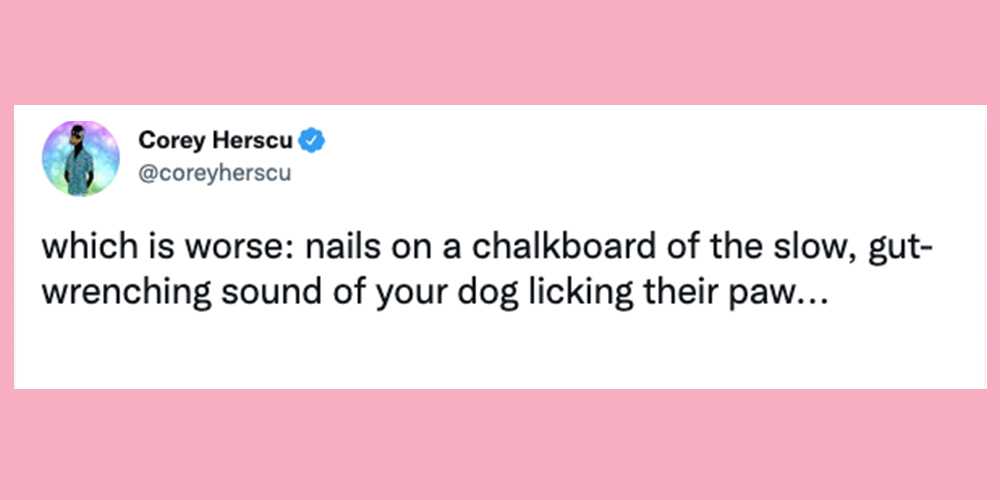
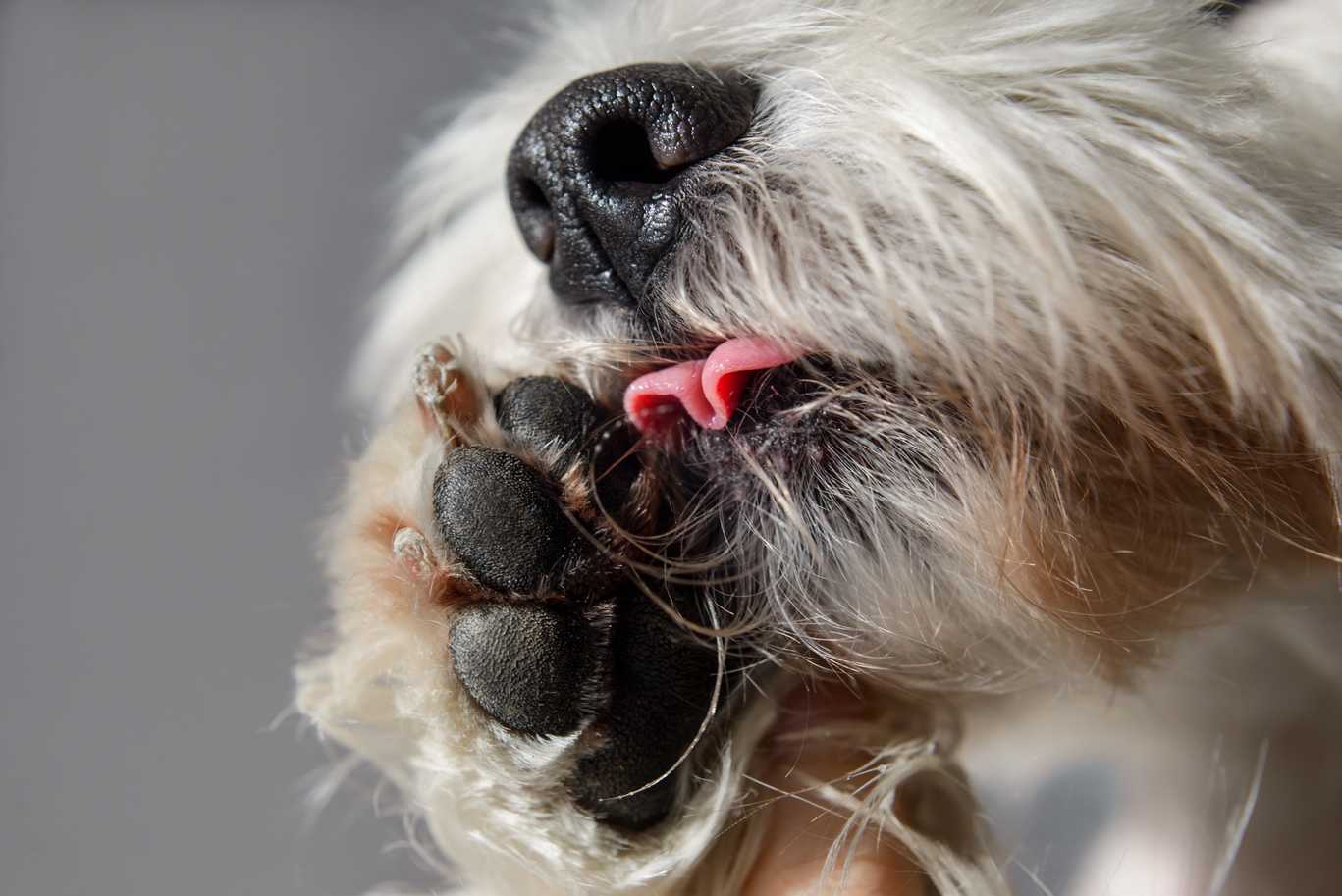
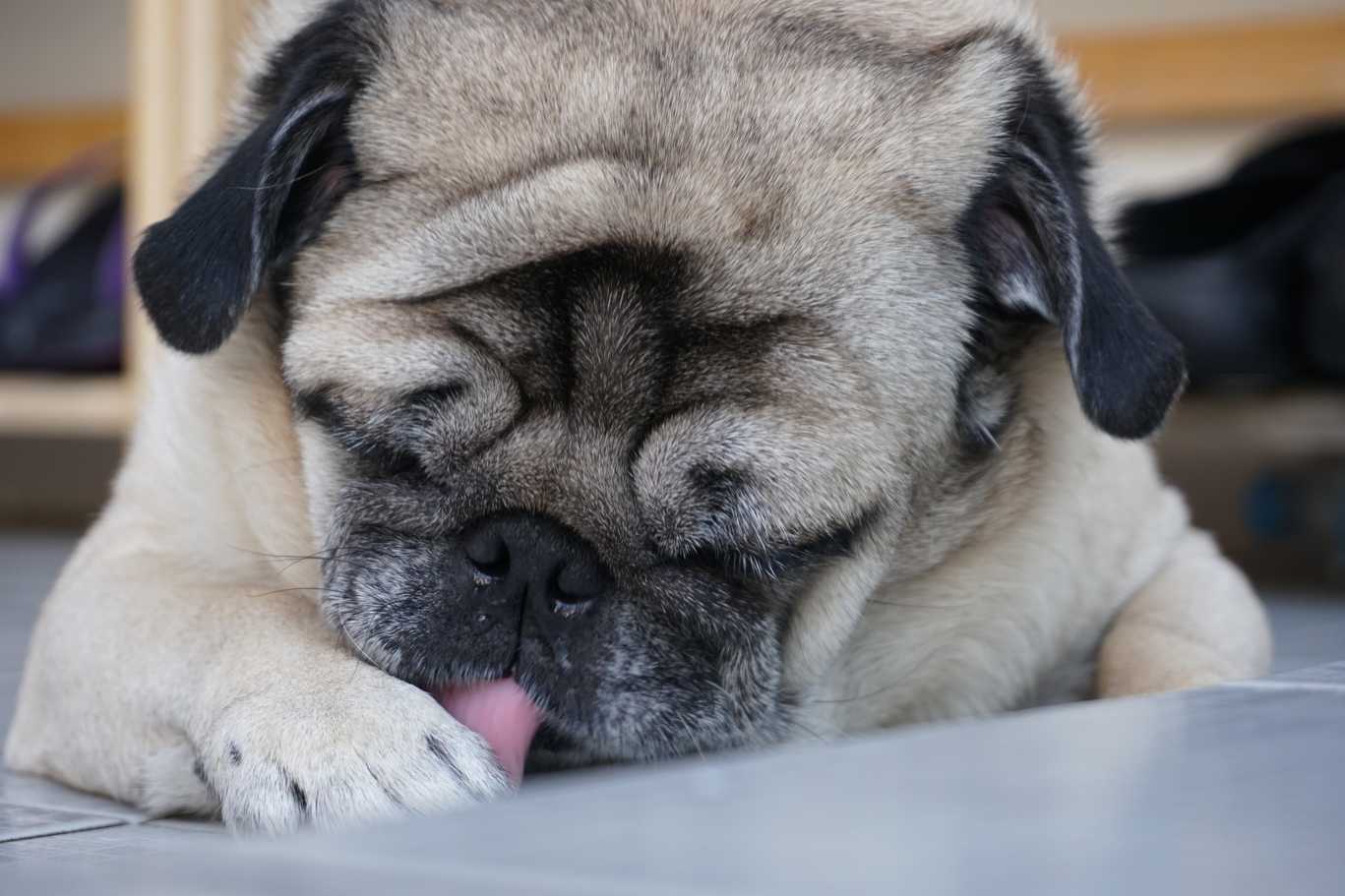
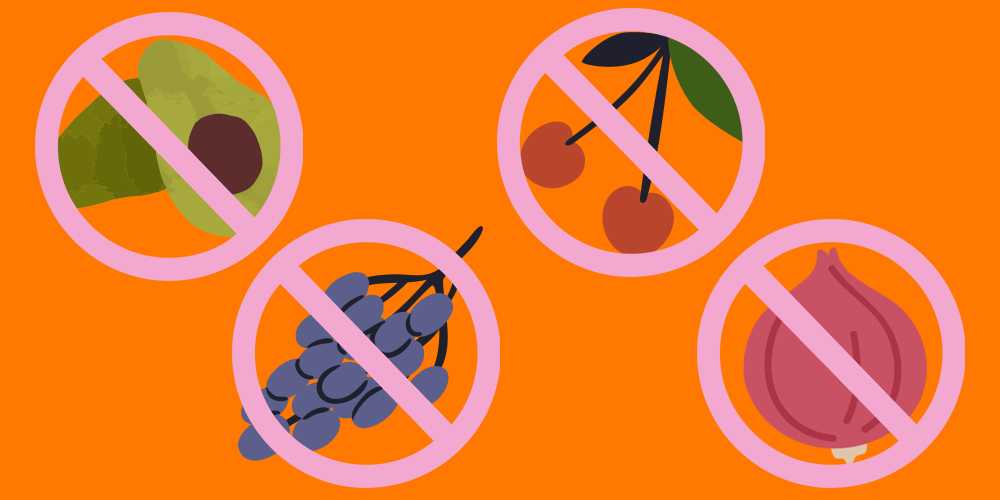

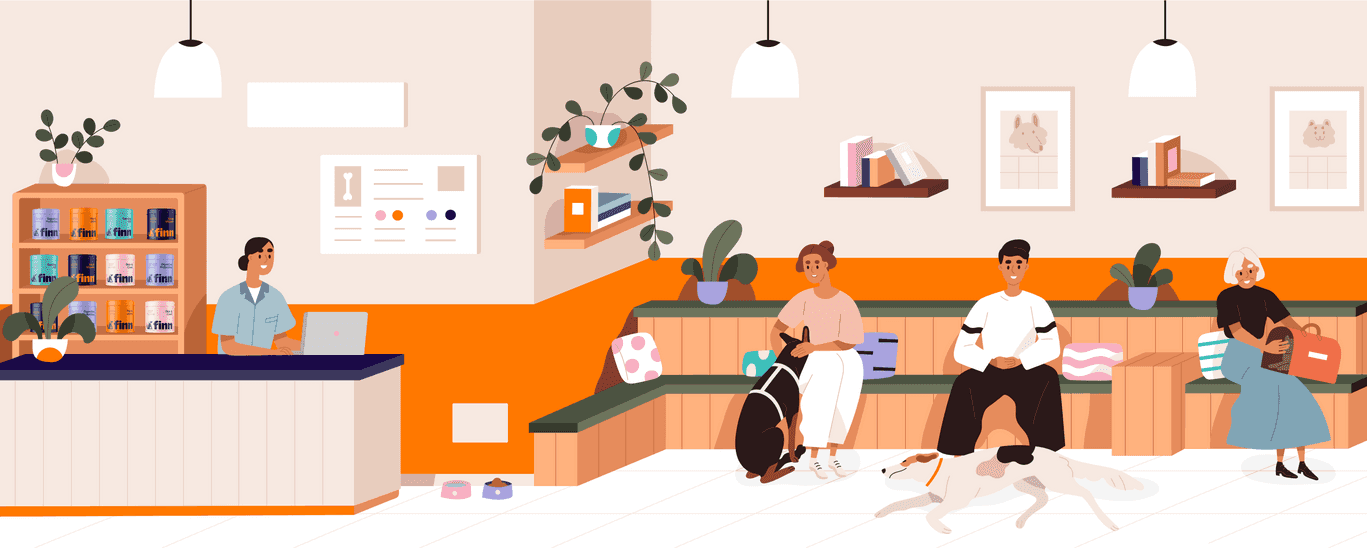
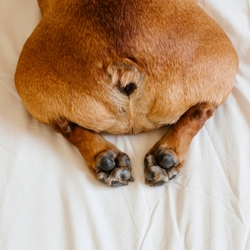
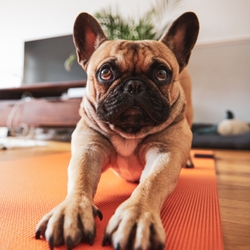
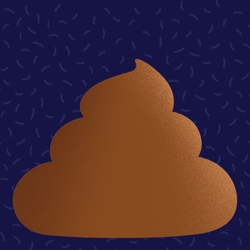
Comments: